It’s no secret that skylights imbue any room in a home with an appealing boost of natural light. They’re also energy efficient. The use of natural light cuts down on electricity costs, and in wintertime, skylights can help to warm a room. But you’ll want to know more before making the decision to install one in your home. Read on for a crash course in skylights.
Types of Skylights
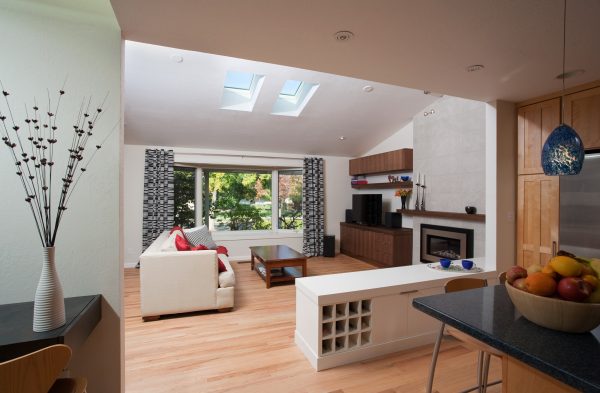
Ventilating: As a counterpoint to fixed skylights, ventilating skylights open to the outside, allowing for helpful ventilation while also providing the requisite natural light. Usually hinged at their bottoms, ventilating skylights come in both manual and motorized options. 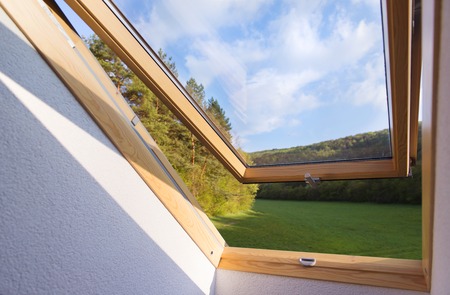
Ventilating skylights can be especially helpful in rooms with excess moisture or prone to collecting heat, like a laundry room, kitchen or bathroom.
Tubular: The newest in skylight technology, tubular skylights—also commonly referred to as sun tunnels or solar tubes—are significantly smaller than typical fixed or ventilating skylights. 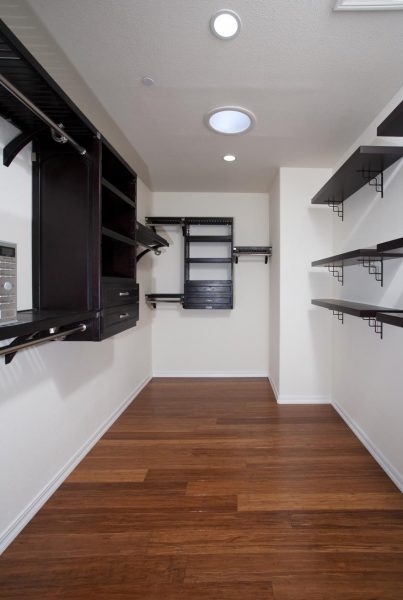
Placement & Size
Both fixed and ventilating skylights come in multiple shapes and sizes, so it’s extremely important to consider your space before installation. Will a single substantial skylight suffice? Or are two smaller ones preferable? And which direction should they face? Before you begin to answer these questions, you’ll want to take into account the size of your room, the height of your ceilings, and the slope of your roof.
“As a rule of thumb,” according to Energy.gov, “the skylight size should never be more than 5% of the floor area in rooms with many windows and no more than 15% of the room’s total floor area for spaces with few windows.”
Furthermore: “Skylights on roofs that face north provide fairly constant but cool illumination. Those on east-facing roofs provide maximum light and solar heat gain in the morning. West-facing skylights provide afternoon sunlight and heat gain. South-facing skylights provide the greatest potential for desirable winter passive solar heat gain than any other location, but often allow unwanted heat gain in the summer.”
A final consideration, albeit no less important, is a skylight’s aesthetic appeal both inside and outside your home. For instance, front loading your roof with skylights may reduce your property’s curb appeal. If you’re unsure, let an expert guide you. Our design team at Valley Home Builders can help you weigh your options and determine the best size, placement, and shape for your skylights.
Glazing
Like windows, skylights are glazed to offer protection from outside elements, specifically light, heat, and cold. Glazing options include plastic and glass. Plastic is less expensive but prone to discoloration and likely to turn brittle over time. Also, if the plastic doesn’t offer adequate UV protection, carpeting or furniture beneath the skylight’s rays may be at risk for fading. Glass, on the other hand, is more durable but also more costly.
A quality skylight will include energy-efficient attributes, like heat-absorbing tints to block unnecessary heat from entering your home or low-emissivity coatings to reduce energy loss from your home’s interior in the winter.
Installation
With proper installation, skylights can last for years without any maintenance, particularly when they’re sloped to allow debris to slide off. Modern versions typically include curbs to carry water away from the seams. However, incorrectly installed, they can be prone to condensation and leaking, eventually leading to water damage. This is why it’s important to let the pros, like Valley Home Builders, handle the job. Our build team will ensure every skylight, no matters its form, size, or location, will be successfully installed in your home with minimal fuss.
Accessory Dwelling Unit Skylights
Accessory dwelling units (ADU) are smaller, independent residential buildings attached to or on the same plot as a single-family home. Many ADUs help older adults live closer to their loved ones, spend more time with family and feel safe with others nearby. ADUs are perfect for an at-home yoga studio, a home office, a private space or a place for kids to stay before they head out on their own.
Skylights can enhance the functionality and appearance of your accessory dwelling unit. The natural daylight makes the room feel bigger, which helps you get the most out of a small space. You can enjoy natural scenes like the sky and trees above while sitting in the comfort of your home.
If you want to create an inviting office or living space, a skylight is a great option. These smaller buildings are a great place to include skylights for you or your guests to enjoy. Attached and detached ADUs are impressive parts of your home, and making sure that they are comfortable and inviting is part of being a homeowner.
Why Choose a Skylight for Your Home?
As we have covered, there are many considerations to take into account when choosing a skylight. Both home and ADU skylights are an excellent source of light and fresh air.
You can best utilize skylights in any room of your home, and the primary benefit of doing so include:
- Natural light: You can save electricity when you have natural daylight from your skylights, which is inviting and aesthetically pleasing. In the winter, the sunlight can help you heat your home as well.
- Privacy: Windows are an essential feature for any home, but they can make you visible to the rest of the world without your permission. Enjoy the benefits of windows while maintaining your privacy from neighbors and passersby.
- Value: Adding in a skylight can increase your home’s resale value. If you choose to sell your home, you can make more thanks to your addition.
- Design: Skylights can improve your house’s aesthetic value. Choose the style and design that best fits your home, opens up the space and brightens the room.
Elevate your home with a skylight from Valley Home Builders. We can bring your vision to life and give you the natural light you need for hosting, studying or living.
Contact Valley Home Builders for More Information
At Valley Home Builders, we have our own in-house architects, designers and project management team to give you quality results that you can trust. Our professionals walk you through our process and work with you to find the right design for your home. Our years of experience give us the confidence to complete any skylight installation with ease.
If you are ready to put a skylight in your house or accessory dwelling unit, Valley Home Builders can help. We will work with you to find the perfect skylight for your needs and deliver long-lasting, quality results. Contact us today to go over your project goals before we get started.
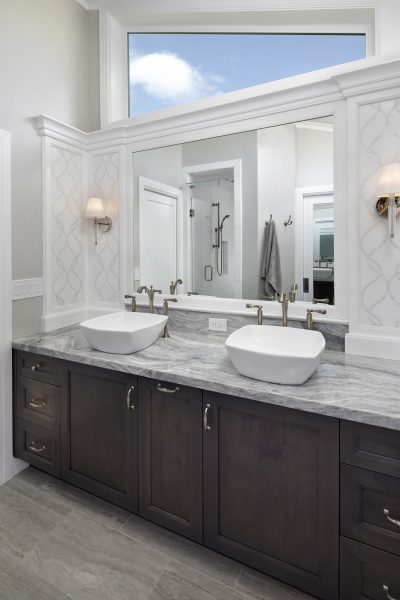
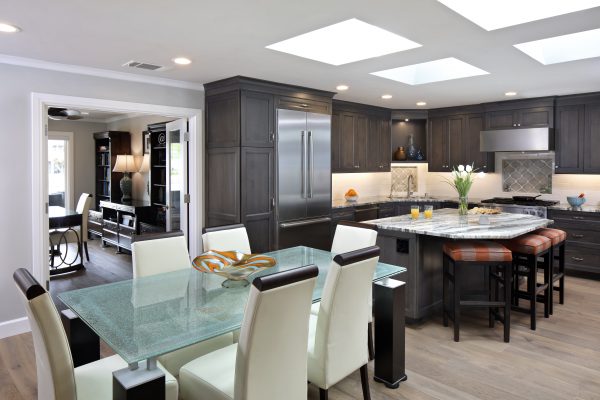
View Our Different Platforms: